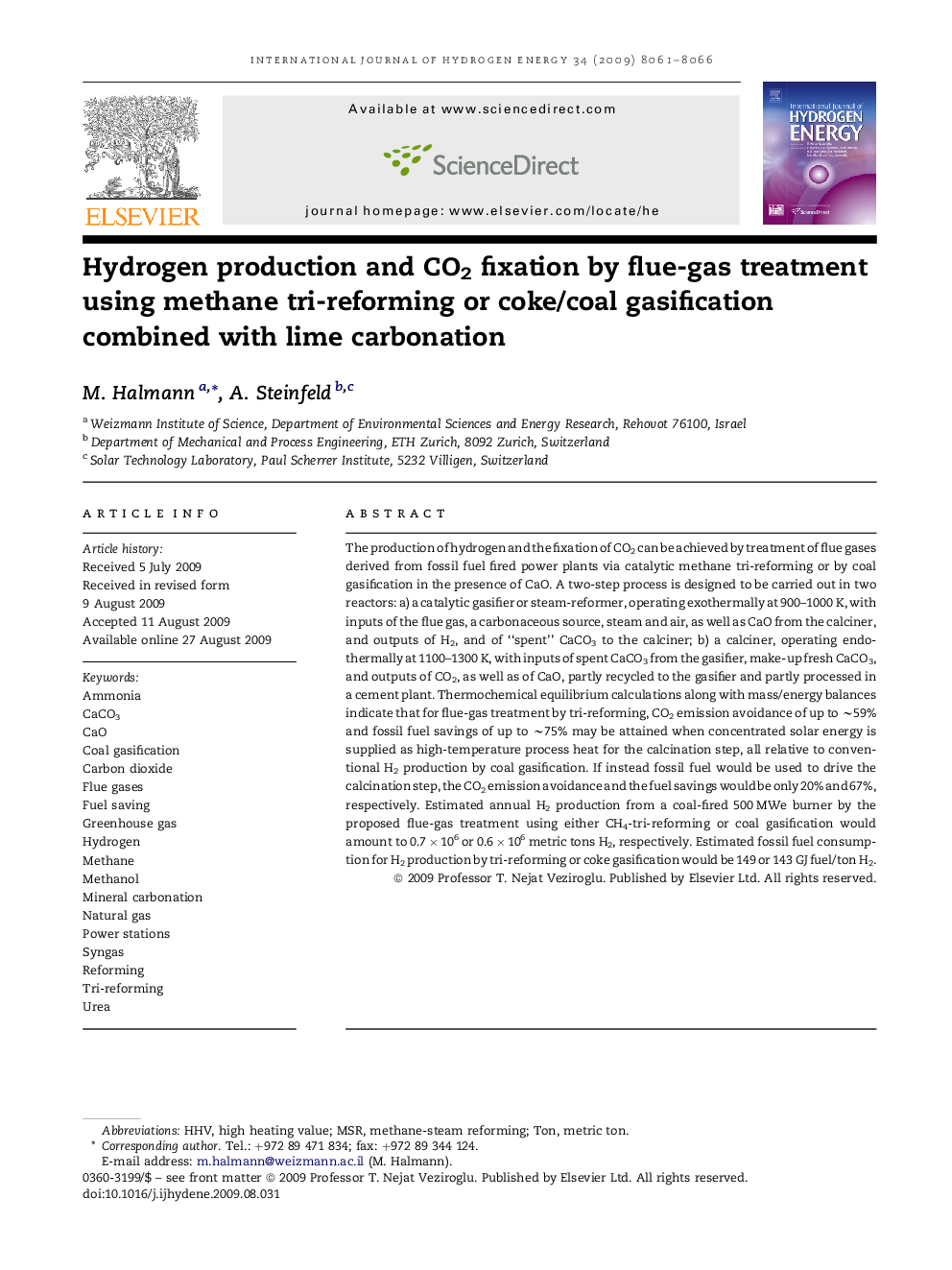| Article ID | Journal | Published Year | Pages | File Type |
|---|---|---|---|---|
| 1283063 | International Journal of Hydrogen Energy | 2009 | 6 Pages |
The production of hydrogen and the fixation of CO2 can be achieved by treatment of flue gases derived from fossil fuel fired power plants via catalytic methane tri-reforming or by coal gasification in the presence of CaO. A two-step process is designed to be carried out in two reactors: a) a catalytic gasifier or steam-reformer, operating exothermally at 900–1000 K, with inputs of the flue gas, a carbonaceous source, steam and air, as well as CaO from the calciner, and outputs of H2, and of “spent” CaCO3 to the calciner; b) a calciner, operating endothermally at 1100–1300 K, with inputs of spent CaCO3 from the gasifier, make-up fresh CaCO3, and outputs of CO2, as well as of CaO, partly recycled to the gasifier and partly processed in a cement plant. Thermochemical equilibrium calculations along with mass/energy balances indicate that for flue-gas treatment by tri-reforming, CO2 emission avoidance of up to ∼59% and fossil fuel savings of up to ∼75% may be attained when concentrated solar energy is supplied as high-temperature process heat for the calcination step, all relative to conventional H2 production by coal gasification. If instead fossil fuel would be used to drive the calcination step, the CO2 emission avoidance and the fuel savings would be only 20% and 67%, respectively. Estimated annual H2 production from a coal-fired 500 MWe burner by the proposed flue-gas treatment using either CH4-tri-reforming or coal gasification would amount to 0.7 × 106 or 0.6 × 106 metric tons H2, respectively. Estimated fossil fuel consumption for H2 production by tri-reforming or coke gasification would be 149 or 143 GJ fuel/ton H2.
